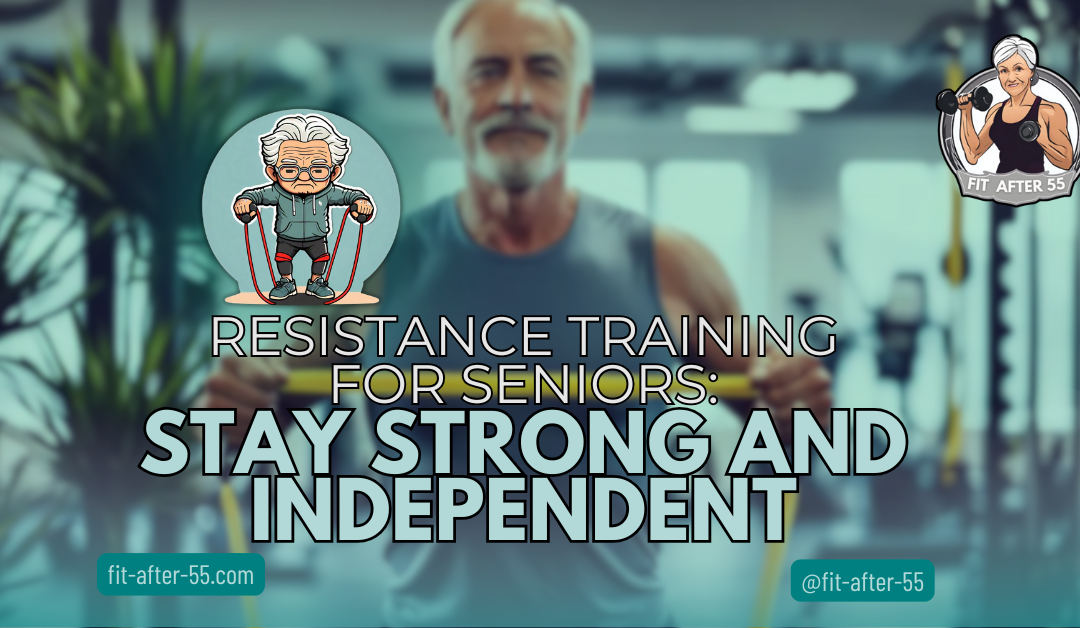Resistance training for seniors is not just about building muscles; it’s about staying strong, maintaining independence, and enhancing quality of life. Muscle mass naturally declines as we age, leading to weakness, balance issues, and an increased risk of falls. However, this doesn’t mean that losing strength is inevitable. Regular resistance training can help combat these changes, keeping seniors active and capable of efficiently handling everyday tasks.
From lifting groceries to getting up from a chair, resistance training exercises target the muscles needed for daily activities, making them essential for older adults. Beyond physical strength, resistance training offers mental health benefits, like reducing stress and boosting mood. If you want to regain vitality and enjoy a more active lifestyle, it’s time to explore how resistance training can be a game-changer for seniors. Dive in and discover how these exercises can help you stay strong, healthy, and independent for years.
The Power of Resistance Training: A Guide for Seniors to Stay Strong and Active
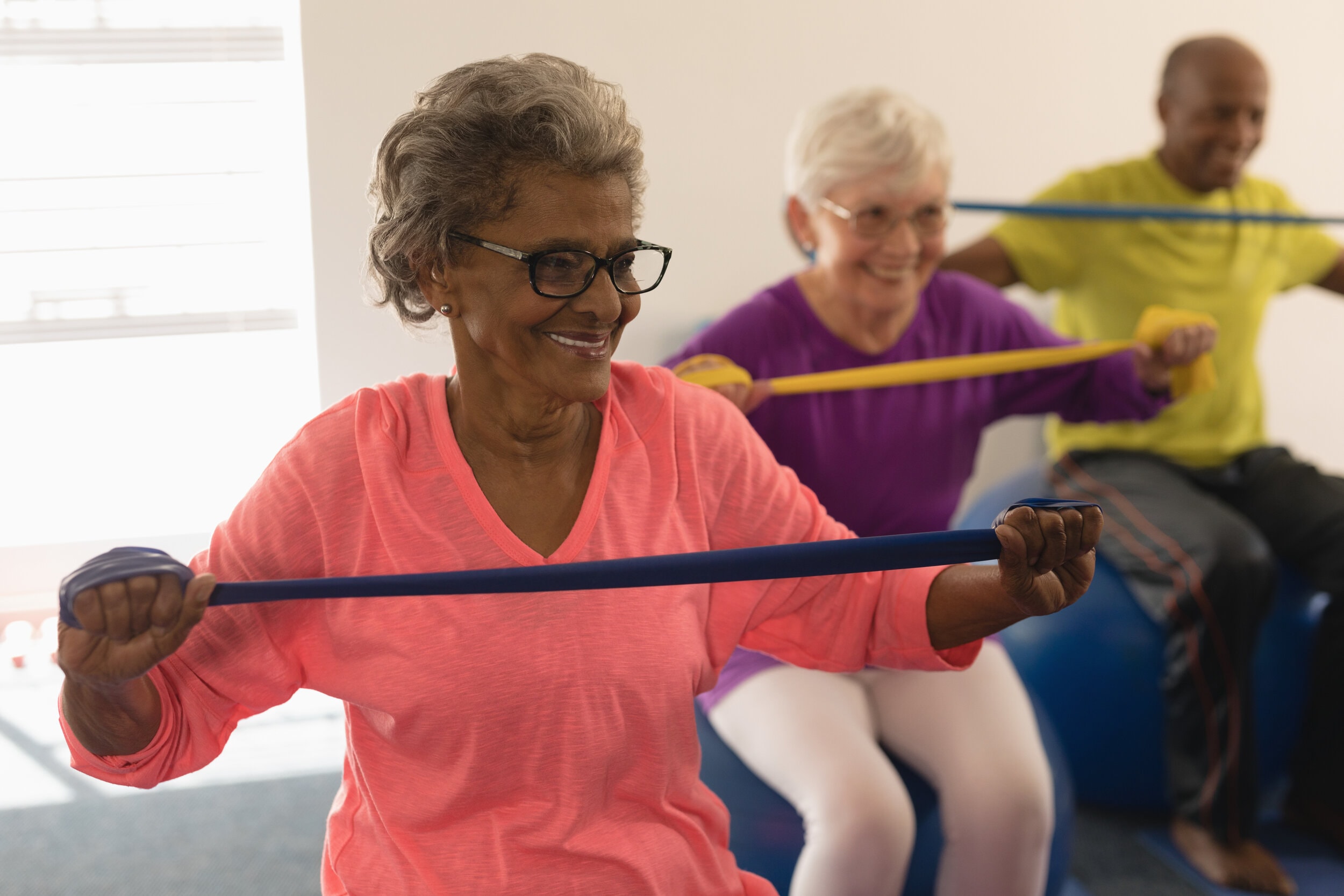
Staying strong and healthy as we age is essential. Resistance training for seniors can help them keep their muscles strong and their bodies active. It’s not just about lifting heavy weights – there are many ways to do resistance training that are safe and fun for older adults.
Resistance training can help seniors build muscle, prevent falls, and improve mobility. This type of exercise uses your body weight, bands, or light weights to make your muscles work against a force. It’s a great way to stay fit and feel good.
You don’t need fancy equipment or a gym membership to start. Many exercises can be done at home with items you already have. The key is to start slow and listen to your body. As you get stronger, you can do more. Remember, it’s never too late to start feeling better and getting stronger.
Key Takeaways
- Regular strength exercises help seniors maintain muscle mass and strength, making daily tasks easier.
- Resistance training can increase bone density, lowering the risk of osteoporosis and fractures.
- Strengthening muscles through resistance training reduces the risk of falls by improving stability and reaction time.
- Many effective resistance exercises can be done at home using body weight, resistance bands, or light weights.
- Begin with light exercises and gradually increase intensity to build strength safely over time.
Benefits of Resistance Training for Seniors
Resistance training for seniors offers many advantages for older adults. It can help you stay strong, healthy, and independent as you age. Let’s look at some key benefits of this type of exercise for seniors.
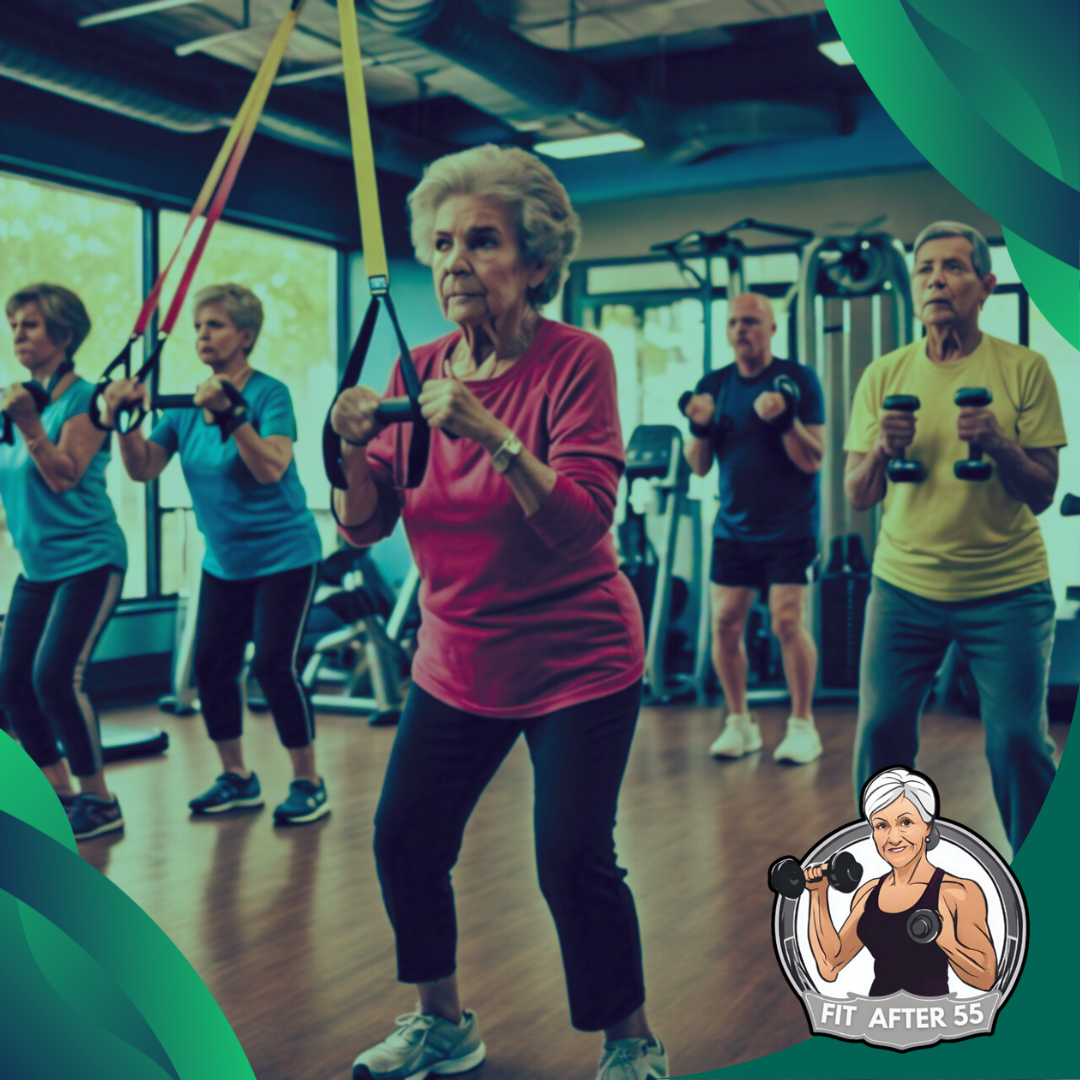
Enhancing Muscle Mass and Strength
As you get older, your muscles naturally start to shrink. This is called sarcopenia. But don’t worry! Resistance training can help fight this process. When you lift weights or use resistance bands, your muscles grow stronger.
This helps you do everyday tasks more easily. Things like carrying groceries or climbing stairs become less of a challenge. Here are some ways resistance training boosts your muscles:
- Increases muscle size
- Improves muscle strength
- Enhances muscle endurance
Even if you’re in your 60s, 70s, or beyond, it’s not too late to start. Your muscles can still get stronger with regular exercise.
Improving Bone Density and Health
Your bones, like your muscles, can get weaker as you age. This can lead to a higher risk of breaks and fractures. But guess what? Resistance training can help your bones, too!
When you do strength training exercises, it puts good stress on your bones. This stress actually helps your bones get stronger and denser. Some benefits for your bones include:
- Higher bone density
- Lower risk of osteoporosis
- Reduced chance of fractures
Remember, it’s never too late to start caring for your bones. Even small increases in bone strength can make a big difference.
Boosting Balance and Coordination
Good balance is key to staying active and avoiding falls. Resistance training can help improve your balance and coordination in several ways.
First, it strengthens the muscles that keep you stable. This includes your core, leg, and ankle muscles. Second, it helps your brain and muscles work better together. Here’s how resistance training helps your balance:
- Strengthens stabilizing muscles
- Improves body awareness
- Enhances reaction time
Try exercises like single-leg stands or heel-to-toe walks. These can boost your balance skills.
Reducing the Risk of Falls and Injury
Falls are a big concern for many seniors. They can lead to serious injuries and loss of independence. The good news is that resistance training can lower your risk of falls.
You become more steady on your feet by improving your strength and balance. This means you’re less likely to trip or lose your balance. Resistance training helps prevent falls by:
- Increasing leg strength
- Improving stability
- Enhancing confidence in movement
Start with simple exercises and gradually increase the challenge. Always use proper form and ask for help if you need it. With time, you’ll feel more secure and stable in your daily activities.
Did You Know?
Seniors should begin slowly and use light weights when starting a resistance training program. Gradually increasing the weight and number of repetitions as strength improves is key. Warming up before exercising is essential, and listening to the body to stop if pain occurs is crucial. It is also advisable for seniors to consult with a doctor before starting any new exercise program.
Check out this video for the best tips on strength training for adults.
By: Clinical Physio
Understanding Age-Related Muscle Loss
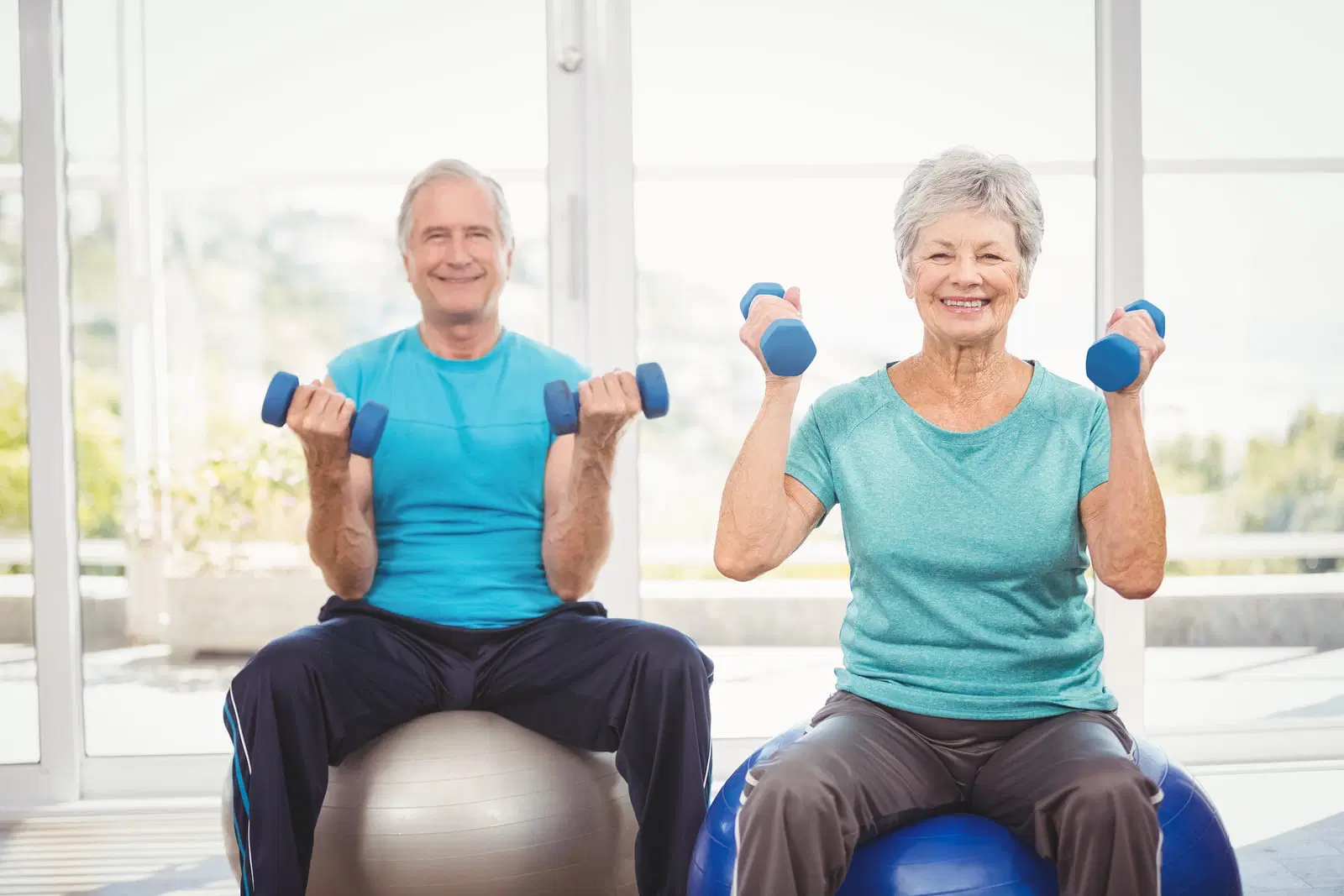
As you get older, your body starts to lose muscle. This can make you weaker and less able to do daily tasks. However, resistance training for seniors offers an effective way to slow this down and stay strong. Don’t worry, and there are ways to maintain your muscle mass and keep up with your daily activities.
The Impact of Sarcopenia
Sarcopenia is the loss of muscle mass and strength as you age. It can start earlier than you might think. After 30, you may lose 3% to 5% of your muscle mass every 10 years. This loss speeds up after 65 for women and 70 for men. It can make simple tasks harder, like:
- Carrying groceries
- Climbing stairs
- Getting up from a chair
Sarcopenia can also increase your risk of falls and fractures. It might make you feel less steady on your feet.
Counteracting Muscle Loss With Resistance Training
Good news! You can fight back against muscle loss. Resistance training is a great way to build stronger muscles as you age. Here are some types of resistance training you can try:
- Weightlifting with machines or free weights
- Using resistance bands
- Body weight exercises like push-ups and squats
- Yoga
These exercises don’t just build muscle. They can also help your brain. Resistance training may slow down memory loss in older adults. Start slow and build up over time. It’s never too late to start getting stronger!
Setting Up a Resistance Training Program
Resistance training for seniors can greatly benefit older adults. A well-planned program helps build strength, improve balance, and boost overall health. Let’s look at how to set up a safe and effective routine.
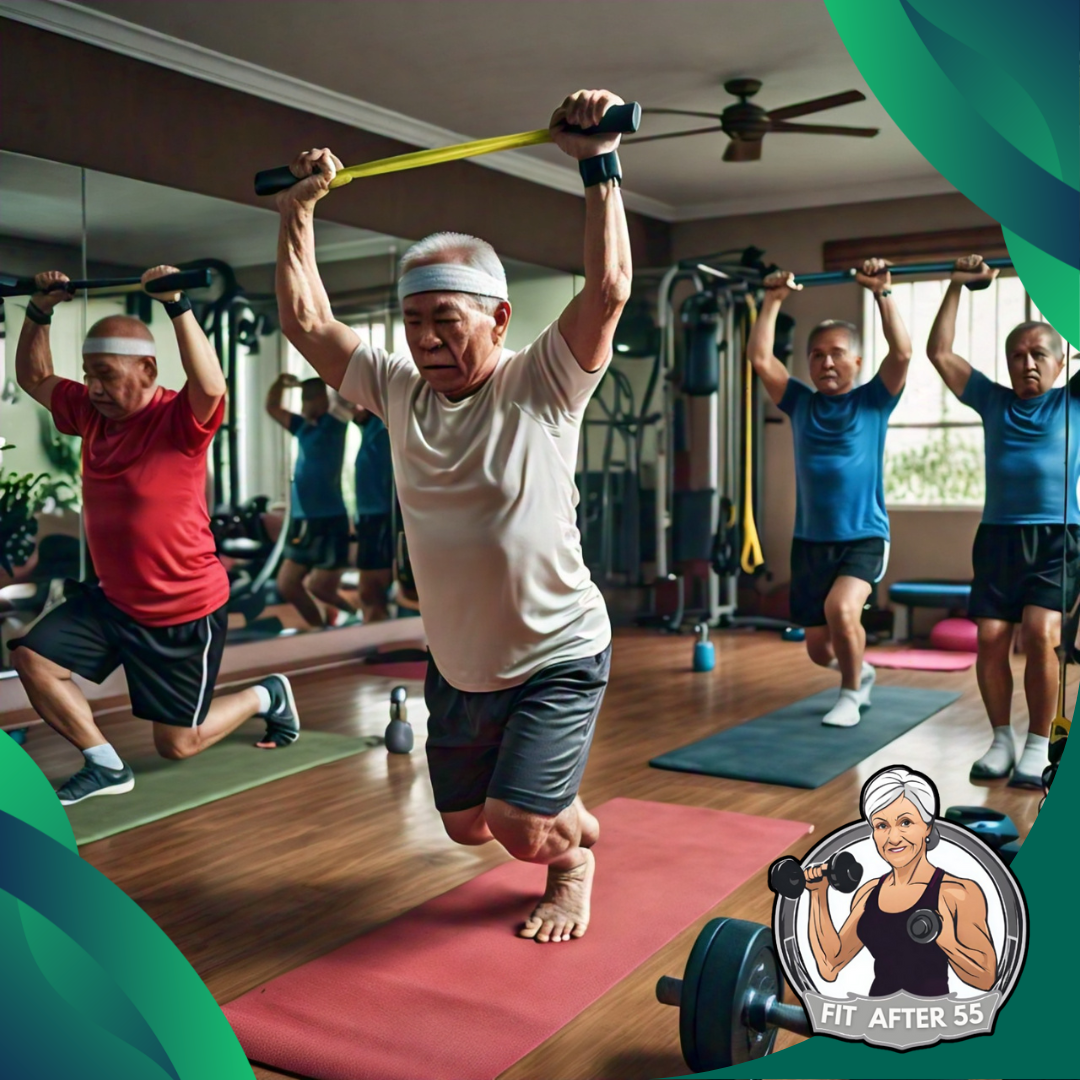
Consulting With Health Professionals
Before starting, talk to your doctor. They can check if you’re ready for exercise and suggest any needed changes. A physical therapist can also help. They’ll look at your strength and mobility. Ask about:
- Any health issues that might affect your workout
- Medicines that could change how you exercise
- Special moves to help with joint problems
Your doctor might also suggest a stress test. This checks how your heart handles exercise.
Creating a Balanced Routine
Pick exercises that work for all your major muscle groups. This includes legs, arms, chest, back, and core. Aim for two sessions per week, with at least a day of rest between. Start with:
- 1-3 sets of each exercise
- 8-12 reps per set
- Light weights or body weight
Exercises to try:
- Chair squats for legs
- Wall push-ups for chest
- Bicep curls for arms
- Back extensions for core
As you get stronger, slowly add more weight or reps. Listen to your body, and don’t rush.
Incorporating Warm-Up and Cool-Down
Always start with a warm-up. This gets your body ready and helps prevent injury. Try 5-10 minutes of light cardio, like walking or arm circles. After your warm-up, do some light stretches. Focus on the muscles you’ll use in your workout. For your cool-down:
- Spend 5-10 minutes doing light activity
- Stretch the muscles you just worked.
- Hold each stretch for 15-30 seconds.
Remember to breathe deeply during your cool-down. This helps your body relax and recover.
Exercises for a Full Body Workout
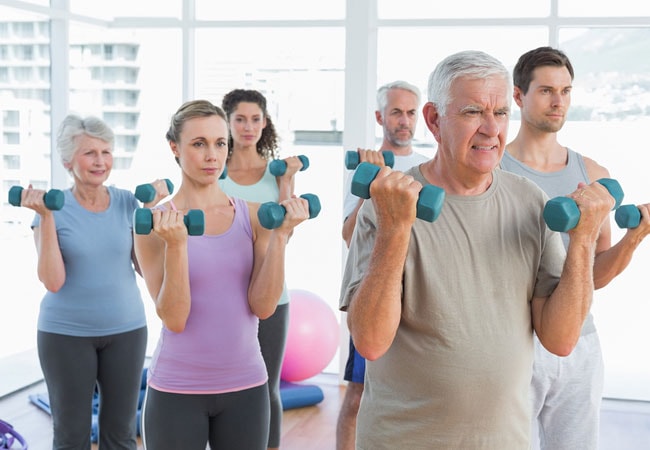
A good workout plan for seniors, including resistance training for seniors, incorporates exercises for the upper body, lower body, and core. These moves help keep you strong and mobile as you age.
Upper Body Exercises
Start with chest presses to work your chest and arms. You can do these with dumbbells or resistance bands. Aim for 2-3 sets of 10-12 reps. Lat pulldowns are great for your back muscles. Use a machine at the gym or a resistance band at home. Do 2-3 sets of 10-12 reps.
Try lateral raises for your shoulders. Use light weights or bands. Lift your arms out to the sides until they align with your shoulders. Do 2-3 sets of 10-12 reps. Finish with bicep curls. Use dumbbells or bands. Keep your elbows close to your body as you curl. Do 2-3 sets of 10-12 reps.
Lower Body Exercises
Squats are a key exercise for your legs. Stand with feet hip-width apart. Lower your body as if sitting back on a chair. Do 2-3 sets of 10-12 reps. Try leg presses if you have access to a machine. This works similar to muscles in squats but with more support. Do 2-3 sets of 10-12 reps.
Step-ups are great for balance. Use a sturdy step or platform. Step up with one foot, then the other. Step back down. Do 10-12 reps on each leg. Calf raises help keep your lower legs strong. Stand tall and rise up onto your toes. Lower back down. Do 2-3 sets of 15-20 reps.
Core Strengthening Exercises
Planks are excellent for overall core strength. Start on your forearms and toes. Keep your body in a straight line. Hold for 15-30 seconds, or as long as you can with good form. Try bird dogs to work your core and improve balance.
Start on hands and knees. Lift one arm forward and the opposite leg back. Hold for a few seconds. Switch sides. Do 10-12 reps on each side. Seated twists are suitable for your obliques. Sit with your knees bent. Lean back slightly. Hold a lightweight ball. Twist to one side, then the other. Do 15-20 twists total.
Using Equipment and Accessories
Seniors can benefit from using various tools for resistance training for seniors. The right equipment helps build strength safely and effectively. Let’s look at some standard options and how to use them properly.
Resistance Bands and Weights
Resistance bands are great for home workouts. They’re cheap and easy to store. You can use them for many exercises. To start, wrap the band around your hands or feet. Then, pull to create tension. Dumbbells are another excellent choice. Start with light weights, maybe 2-3 pounds. You can do upper-body resistance training with dumbbells.
Try bicep curls or shoulder presses. For leg work, try a dumbbell squat. Hold weights at your sides. Slowly lower your body as if sitting back on a chair. Keep your back straight. Then, stand back up.
Safe Usage of Exercise Machines
Gyms have many machines for resistance training. The leg press is good for building lower body strength. Sit with your back against the pad. Push the platform away with your feet. Always start with light weights on machines.
Ask a trainer to show you how to use them safely. Adjust the seat and settings to fit your body. Remember to breathe normally while using machines. Don’t hold your breath. If something hurts, stop right away. It’s better to use less weight and do the exercise correctly.
Maintaining Proper Form and Technique
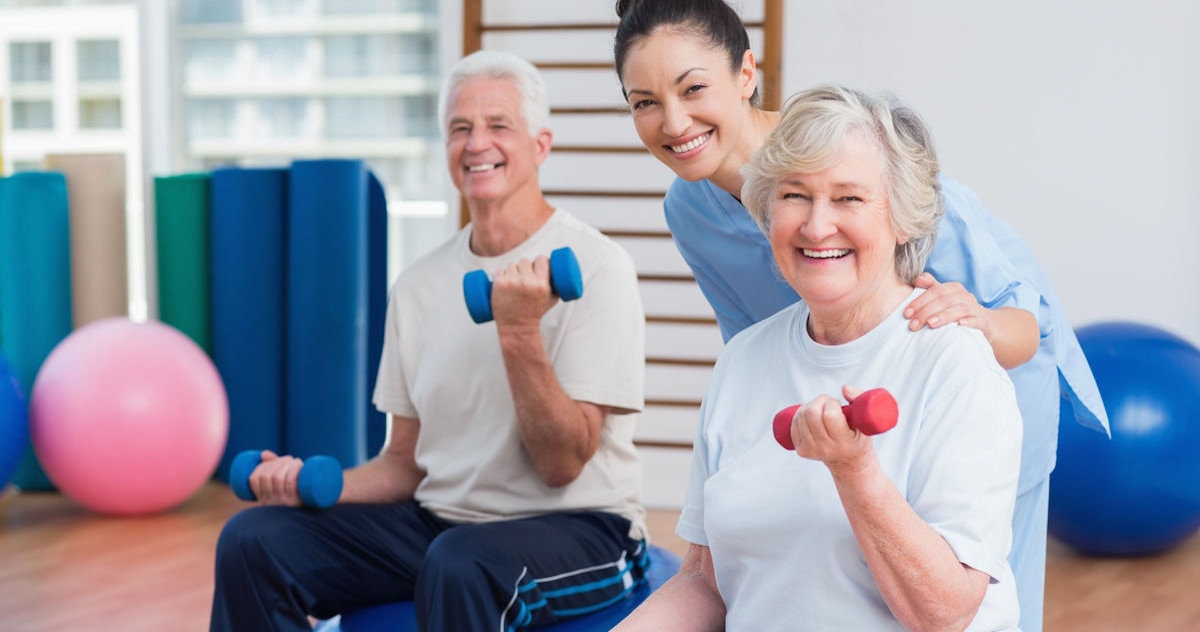
Good form is key to getting the most out of your resistance training for seniors. It helps you stay safe and see better results. Let’s examine why proper form matters and how you can do your exercises correctly.
The Importance of Proper Form
Using the proper form when you exercise is crucial. It helps you target the right muscles and avoid getting hurt. When you do a squat with good form, you work your legs and core better. This means you get stronger faster.
Good form also lowers your risk of injury. When you lift weights the right way, you put less stress on your joints. This is extra important as you get older. Proper form helps you lift more over time. You’ll be able to do more reps and use heavier weights. This leads to better strength gains and more muscle.
Techniques for Safe Resistance Training
Start with light weights to learn the right moves. Focus on slow, controlled motions. For a bicep curl, keep your elbows close to your body. Don’t swing the weight up. For compound exercises like deadlifts, keep your back straight. Bend at your hips and knees, not your waist. Push through your heels as you stand up.
Remember to breathe. Exhale as you lift the weight, and inhale as you lower it. This helps you stay stable and gives you more power. Use a mirror to check your form. Or ask a friend or trainer to watch you. They can spot mistakes you might miss.
Avoiding Common Workout Mistakes
Don’t rush your reps. Moving too fast can lead to poor form and injuries. Take your time and focus on each move. Avoid locking your joints at the top of a lift. This puts too much stress on your elbows or knees. Keep a slight bend in your joints instead. Don’t let yourself get too tired. Fatigue can make your form slip.
Stop your set if you can’t keep good form. Be careful not to overarch your back during exercises. This can hurt your spine. Keep your core tight to protect your back. Don’t forget to warm up before you start. A good warm-up gets your muscles ready and helps prevent injuries.
Adapting Workouts for Individual Needs

Tailoring your workout routine to your unique needs is key for seniors doing resistance training. This involves adjusting exercises for better mobility and gradually increasing intensity over time, ensuring that resistance training for seniors is both effective and safe as they progress.
Modifying Exercises for Better Mobility
As you age, you might face mobility challenges. Don’t worry! You can modify exercises to suit your abilities. Try these adaptations:
- Use a chair for support during standing exercises
- Perform exercises while seated if balance is an issue.
- Use resistance bands instead of weights for gentler movements.
These changes help you stay active while reducing injury risk. Remember, it’s about finding what works best for you. Focus on exercises that improve your everyday activities. Practice getting up from a chair or reaching for objects. This will boost your independence and quality of life.
Progressive Overload and Adaptation
Your body adapts to exercise over time. To keep seeing benefits, you need to gradually increase the challenge. This is called progressive overload. Here’s how you can do it:
- Start with light weights or resistance bands
- Slowly increase repetitions or sets
- When exercises feel too easy, add more weight or resistance
Resistance training improves brain function as you age. It boosts blood flow to your brain and strengthens the connection between your nervous system and muscles. Listen to your body. If something hurts, stop and adjust. Progress at your own pace. Celebrate small wins along the way!
Integrating Balance and Flexibility Training
Adding balance and flexibility exercises to your workout routine helps prevent falls and improves your range of motion. When combined with resistance training for seniors, these exercises work together to boost your overall fitness and make daily tasks easier.
Stretches for Enhancing Flexibility
Start with gentle stretches to warm up your muscles. Try toe touches while sitting or standing. Hold each stretch for 15-30 seconds and breathe deeply. Calf stretches are great for leg flexibility. Stand facing a wall, place your hands on it, and step one foot back. Keep your back leg straight and lean forward.
For upper body flexibility, do arm circles. Stand with your feet shoulder-width apart and make small circles with your arms. Gradually make the circles bigger. Don’t forget about your neck and shoulders. Gently tilt your head to each side, holding for a few seconds. Roll your shoulders forward and backward to loosen them up.
Balance Exercises for Stability
Balance training is key for preventing falls. Start with simple exercises and progress as you get stronger. Try the one-leg stand. Hold onto a chair and lift one foot off the ground. Hold for 10 seconds, then switch legs.
As you improve, try it without holding the chair. The heel-to-toe walk is another great balance exercise. Walk in a straight line, placing the heel of one foot directly in front of the toes of your other foot.
For a challenge, try the bird dog exercise. Get on your hands and knees. Lift your right arm and left leg at the same time, hold for a few seconds, then switch sides. Remember to focus on your core strength during these exercises. A strong core helps with balance and stability in all your movements.
Practical Tips for Sustainable Training
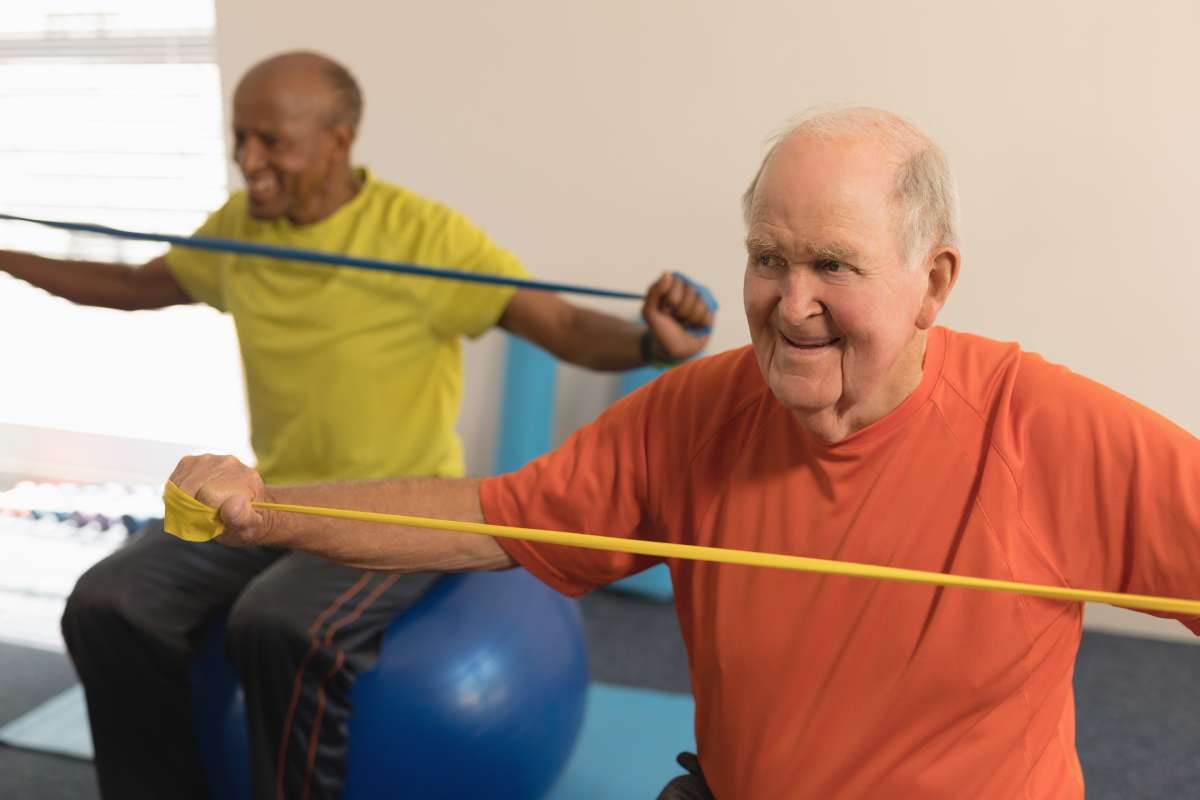
Keeping up with resistance training for seniors takes effort, but it’s worth it. Here are some tips to help you stay on track and overcome obstacles along the way.
Staying Motivated Over Time
Set clear goals for your fitness journey. Write them down and put them somewhere you’ll see every day. This will remind you why you started. Find a workout buddy. Having someone to train with can make it more fun and keep you accountable.
You can encourage each other on tough days. Mix up your routine. Try new exercises or change the order of your usual ones. This keeps things interesting and works for different muscle groups.
Celebrate small wins. Did you lift a little more this week? Great job! Recognizing progress, no matter how small, boosts your confidence. Make it a habit. Pick a regular time for your workouts and stick to it. Soon, it will feel as natural as brushing your teeth.
Overcoming Plateaus and Challenges
Plateaus are normal, but they can be frustrating. If you stop seeing progress, it’s time to shake things up. Try changing your workout routine. Add more weight, do more reps, or learn new exercises.
Listen to your body. Some days, you might feel tired or sore. It’s okay to take it easy or rest. Pushing too hard can lead to injury. Don’t get discouraged by setbacks. If you miss a workout or two, just get back on track. Consistency over time is what matters most.
Ask for help if you need it. A trainer can give you tips to improve your form or suggest new exercises. They can also help you create a full-body workout plan that fits your needs. Remember why you started. On tough days, think about how much stronger you’ve become. Your hard work is paying off in better health and more energy.
Health Benefits Beyond the Gym
Resistance training for seniors offers many perks that carry over into daily life. You’ll feel stronger and more capable both physically and mentally.
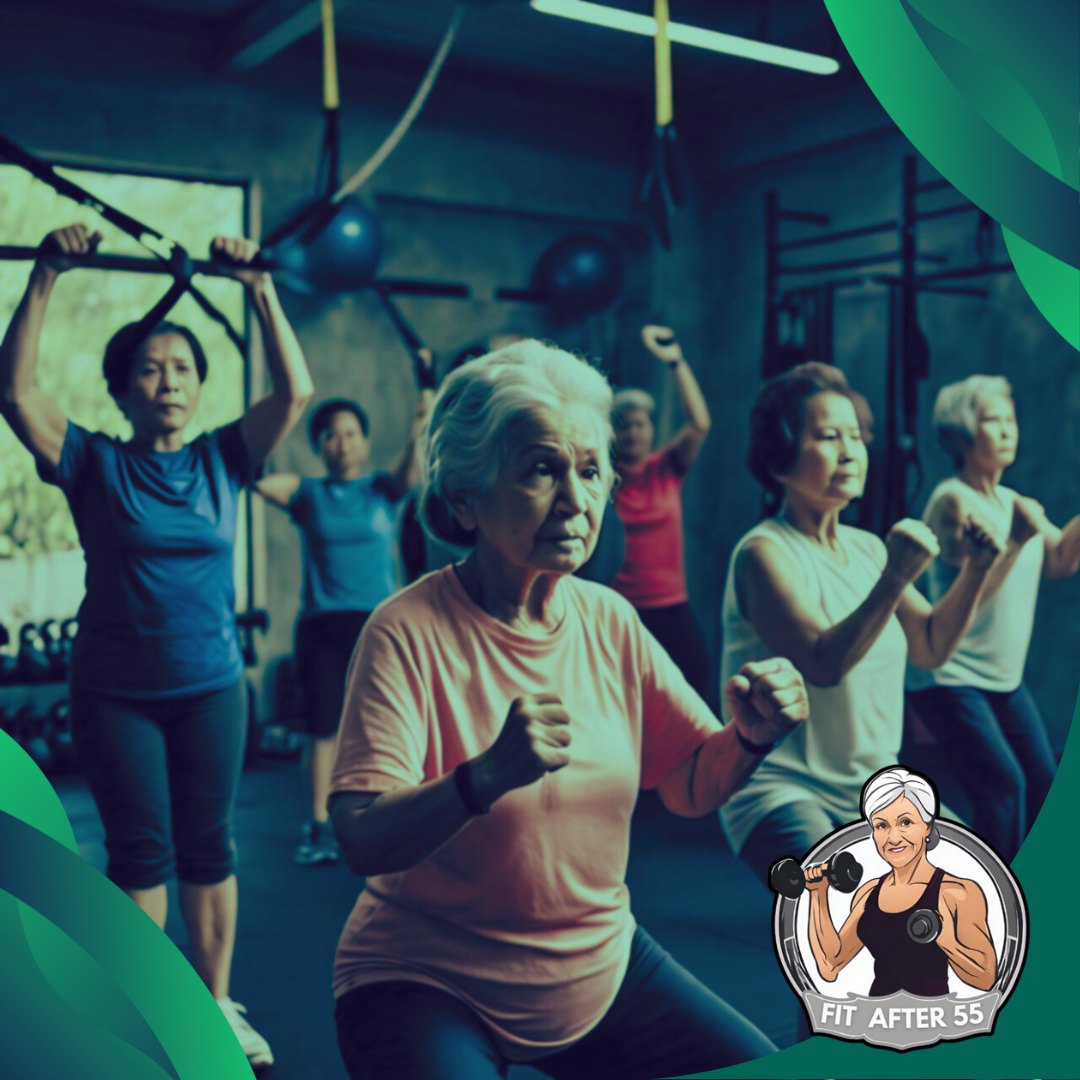
Improving Everyday Quality of Life
Resistance training helps you stay independent as you age. Simple tasks like carrying groceries or climbing stairs become easier. You’ll have a better balance, which lowers your risk of falls. Your joints will thank you, too.
Strong muscles take pressure off your joints, easing pain from conditions like arthritis. Daily chores won’t leave you as tired or sore. Mentally, you’ll feel sharper. Exercise boosts brain health, improving memory and focus. You may even sleep better at night, waking up refreshed.
Potential for Increased Longevity
Regular strength training could help you live longer. Studies show it lowers the risk of dying from heart disease, especially in women. It fights other health issues, too. Your bones get stronger, lowering the chance of osteoporosis. Blood sugar control improves, which is great if you have diabetes.
Your body will be better at burning calories, even when resting. This helps keep your weight in check. A healthy weight means less risk of many diseases. Remember, you don’t need to lift heavy weights to see these benefits. Even light resistance training twice a week can make a big difference in your health and lifespan.
Discover a 30-minute strength training workout for seniors and elderly, ideal for home exercise.
By: HASfit
Empowering Seniors: How Resistance Training Supports Longevity
Resistance training for seniors is an invaluable tool for promoting physical health and maintaining independence as we age. By incorporating resistance exercises into your routine, you can combat the effects of sarcopenia, enhance bone density, and improve balance, all of which reduce the risk of falls and injuries. The mental health benefits are just as significant, improving mood and reducing stress. Whether using body weight, resistance bands, or light weights, there’s an approach suitable for everyone. Starting slow, listening to your body, and gradually increasing intensity can help ensure a safe and effective fitness journey.
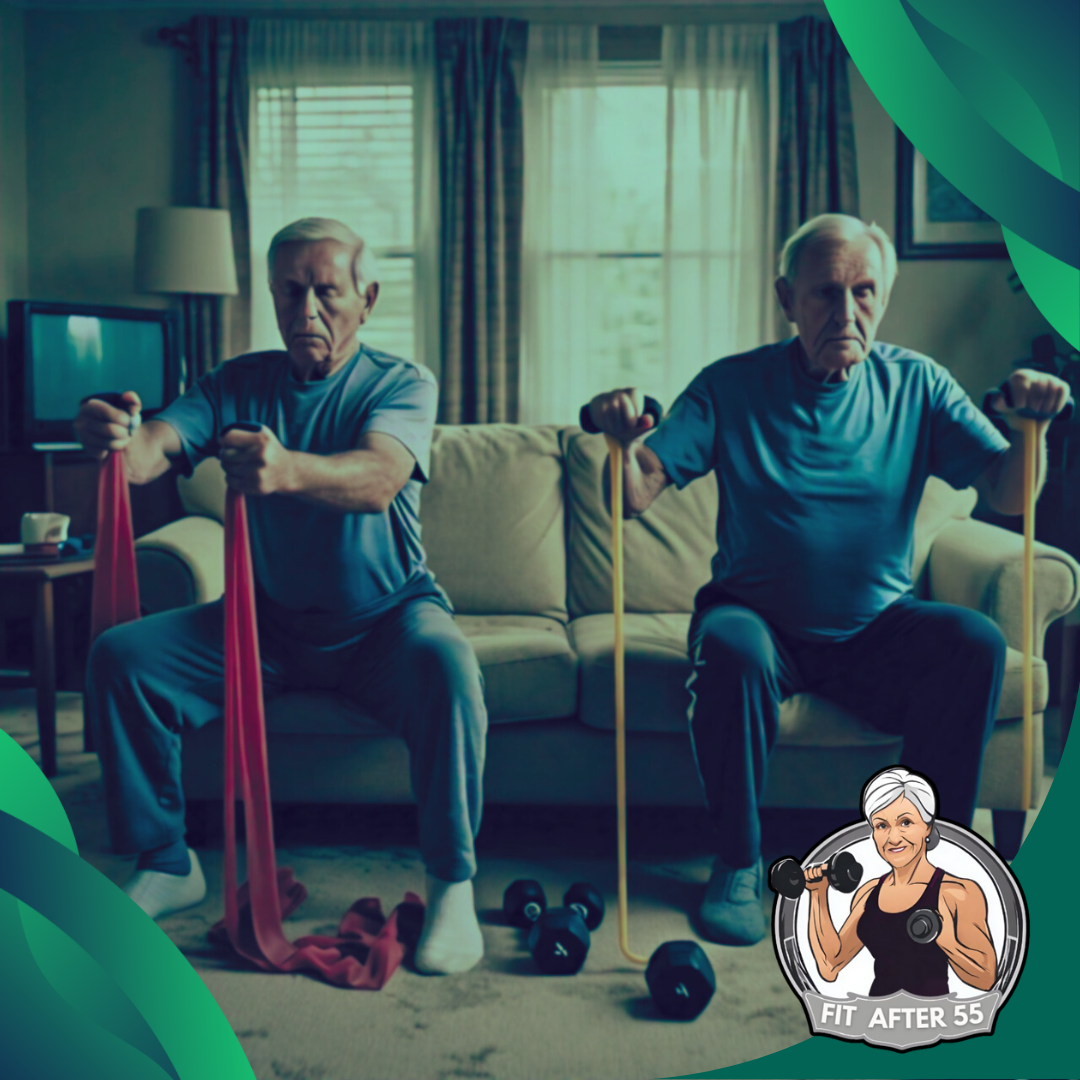
It’s never too late to prioritize strength and mobility. With the proper guidance and consistent effort, seniors can enjoy a higher quality of life, staying active and confident in their daily activities. Resistance training isn’t just about lifting weights; it’s about empowering yourself to lead a healthier, more independent life. So, start today, no matter your age, and experience the transformative power of resistance training in maintaining your strength, independence, and overall well-being for years to come.
Frequently Asked Questions
Resistance training offers many benefits for seniors. It can improve strength, balance, and overall health when done correctly. Here are some common questions about strength training for older adults.
Can Resistance Training Improve Balance and Reduce Fall Risk in the Elderly?
Yes, resistance training can help improve balance and reduce fall risk. Exercises that strengthen your legs and core are beneficial. Try standing exercises like squats or leg lifts. These moves can improve stability and coordination.
Are There Specific Strength Training Routines Recommended for Seniors Over 70?
Focus on exercises that use major muscle groups. Try leg presses, chest presses, and seated rows. Start with 1-2 sets of 8-12 repetitions for each exercise. Use a weight that feels challenging but not overly complicated.
How Can Seniors Integrate Resistance Training Into Their Home Workout Routine?
You can do many practical exercises at home with minimal equipment. Use resistance bands, light dumbbells, or even your own body weight. Try wall push-ups, chair squats, and band exercises. A basic workout might include upper body exercises on Monday, lower body on Tuesday, and balance exercises throughout the week.
Energize Your Fitness Path After 55!
Hello, fitness enthusiasts! Explore the key elements of maintaining an active and healthy lifestyle with Fit After 55. Whether you’re an experienced athlete or just beginning your journey, our platform is your ultimate resource for wellness. We offer tips on setting achievable goals and tracking your progress, empowering you to redefine success after 55. Visit our website and connect with us on Facebook to unlock your full potential with Fit After 55!

